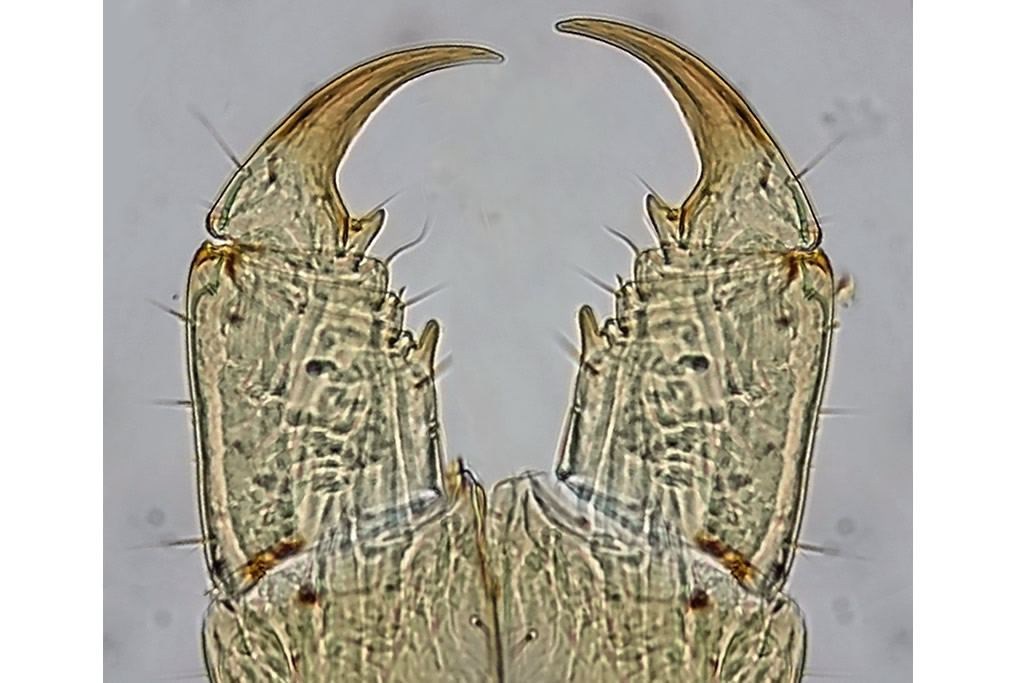Schendyla dentata (Brölemann & Ribaut, 1911)
Synonyms
Status:
- GB IUCN status: Not applicable (non-native)
- GB rarity status: Naturalised
ID Difficulty
Identification
Schendyla species are small pallid centipedes typically with conspicuously swollen last legs that lack claws and bear two large coxal pores at the base of each.
Schendyla dentata is a very small pallid species (to 12 mm) with 39 pairs of legs. The forciples, which bear a prominent tooth at the base of the poison claw and a second prominent tooth on the femoroid, are diagnostic of this species and swollen last pair of legs with a very short metatarsus are also characteristic (see images to right).
More information to allow accurate identification is given in the published identification keys by Tony Barber (2008 & 2009).
Distribution
There are scattered records of Schendyla dentata mainly across southern England, but also isolated records in Wales, Scotland and Ireland. Targeted surveys of churchyards in Oxfordshire in the 1990s found it to be widespread across the county (Gregory & Campbell, 1996, pg.30).
Habitat
It is usually found in urban or sub-urban sites, such as gardens and churchyards, typically in the winter months (Gregory, 2010). It is an elusive species, with single specimens typically found on the underside of, or among soil beneath, large stones partly embedded in soil.
This account is based on the 'Centipede Atlas' (Barber, 2022).
Links
ChiloBase 2.0 - World Catalogue of Centipedes: https://chilobase.biologia.unipd.it/searches/result_species/3284





